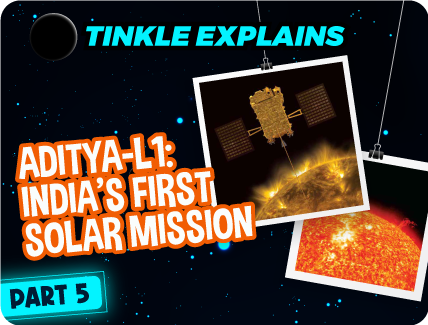

















A launch vehicle is a rocket that launches a satellite or spacecraft into space. The Polar Satellite Launch Vehicle (PSLV) is one such launch vehicle designed and operated by the Indian Space Research Organisation (ISRO).
The PSLV’s prowess was demonstrated through numerous international satellite launches, and it serves as the foundation for India’s space programme. After its first successful launch in October 1994, PSLV emerged as the favoured choice for clients, both nationally and internationally, because of its cost-effectiveness and reliability.
Launch vehicles operate using a propulsion system. A propulsion system consists of motors or engines and is used to generate thrust to propel an object forward. It works on the principle of Newton’s third law of motion. The law states that every action has an equal and opposite reaction. So, when the propellant (rocket fuel + oxidizer) is ejected at high velocity in the opposite direction, it creates an equal and opposite reaction force. And, this reaction force, which is called thrust, propels (forward motion) the vehicle.
PSLVs are four-stage launchers with alternating solid and liquid stages. Solid rocket motor and liquid rocket engines use different types of fuel, each serving a distinct purpose in the launch process. Solid rocket motors provide high thrust, helping the rocket overcome Earth’s gravity and ascend rapidly. On the other hand, liquid rocket engines offer finer control over propulsion speed, trajectory and orientation as flow rate of liquid fuel can be precisely adjusted . Designing and building a liquid rocket engine is a lot more challenging than building a solid rocket motor. In India, liquid rocket technology was first used in PSLV. Its success established India as a competitive player in the international space launch market.
One of the first groundbreaking achievements of the PSLV was inserting Chandrayaan-1 impeccably into the Moon’s orbit, showcasing India’s ability in space exploration. Later, it was also used in India’s Mars mission.
Recently, Aditya-L1 was launched using PSLV-XL. The XL is a variant of PSLV with additional strap-on motors so that it can handle heavier payloads*. Learn about the mission objectives of Aditya-L1 in the next article.
*A rocket’s payload may consist of a satellite, space probe, or spacecraft designed to transport humans, animals, or cargo.